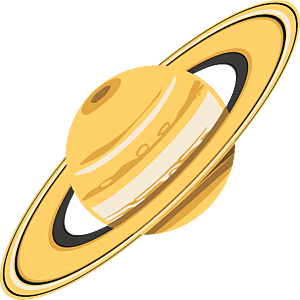The Downlink • Nov 12, 2021
Mind-blowing space volcanoes
Space Snapshot

Sometimes a spacecraft is in the right place at the right time to capture something truly astonishing. In this case, NASA’s Galileo spacecraft caught a massive volcanic eruption — the blue protuberance on the left — on Jupiter’s moon Io. This small moon is one of just a handful of volcanically active worlds in our solar system. Image credit: NASA/JPL/DLR.
You love space, now take action
This weekly newsletter is your toolkit to learn more about space, share information with your friends and family, and take direct action to support exploration. Anyone can subscribe at planetary.org/connect to receive it as a weekly email.
Mission Briefings


Please be gentle with the “eggshell planets” outside our solar system. Researchers have uncovered a kind of exoplanet that may be useful in the search for Earth-like worlds. A new study in the Journal of Geophysical Research: Planets describes these so-called “eggshell planets” as having ultra-thin crusts and no plate tectonics. The team posits such worlds would be inhospitable to life. Pictured: An artist’s rendition of an eggshell exoplanet. Image credit: NASA.

NASA has officially pushed the timeline on getting astronauts back to the Moon. The agency announced this week that a 2024 lunar landing is not feasible; it’ll instead aim for 2025 at the earliest. NASA cited legal battles over the Human Landing System as part of the delay, in addition to the COVID-19 pandemic among other reasons.

SpaceX’s Crew-2 Dragon put on quite the light show as it re-entered Earth’s atmosphere. Stargazers in the southern U.S. got a good look at the capsule streaking across the sky before it splashed down off the west coast of Florida. The four Crew-2 astronauts aboard returned safely back to land after spending nearly 200 days on the International Space Station. Four more astronauts in Crew-3 successfully launched on Wednesday.
From The Planetary Society


Volcanoes have immense destructive and creative power. Throughout the solar system, they’re responsible for reworking the surfaces of planets and moons, which, on Earth, can mean trouble. But they can also teach us about what lies beneath a world’s exterior, and they’re undeniably spectacular. Our new collection of images of some of our solar system’s mighty volcanoes will make you glad you live on a relatively calm volcanic planet. Pictured: Plumes coming from geysers on Saturn’s moon Enceladus, imaged by NASA’s Cassini spacecraft. Image credit: NASA/JPL-Caltech/SSI/Gordan Ugarkovic.

A million books worth of data are transmitted between Earth and spacecraft every day. Badri Younes, leader of NASA’s Space Communications and Navigation (SCaN) program, oversees the whole process. Younes joins this week’s Planetary Radio to talk about how data transmission technologies are advancing as space gets busier, and how all this data is only really of value if it ends up teaching the public something new about space.

What’s it like to be tasked with defending the planet? Lindley Johnson joins this month’s Planetary Radio: Space Policy Edition to talk about his role as NASA's planetary defense coordination officer. His office oversees the Double Asteroid Redirection Test (DART) mission, launching later this month. Johnson talks about how DART represents a new era for the agency's Planetary Defense program after nearly 25 years of convincing policymakers, international partners, and even NASA that asteroid detection and deflection is an important use of taxpayer dollars.

Cast your vote! We want you to pick the Best of 2021: this year’s most exciting moments in space exploration, most jaw-dropping space images, funniest space memes, and more. Select your favorites and help us celebrate an eventful year in science and exploration.
What's Up

In the west around sunset you’ll begin to see Venus shining very bright. Higher in the sky and to the left you’ll see Saturn. Further to its left, bright Jupiter. In the predawn look for Mercury and Mars very low to the eastern horizon. Learn more at planetary.org/night-sky.
Celebrate LightSail 2 at the Smithsonian FUTURES Exhibit!

The Planetary Society’s crowdfunded LightSail 2 solar sailing spacecraft is being featured in a new exhibit at the Smithsonian Institution in Washington, D.C., which opens next weekend. To celebrate the unveiling of the FUTURES exhibit, the Smithsonian is hosting a weekend of free virtual events featuring Planetary Society CEO Bill Nye and other special guests. Register today and join us in celebrating the future of space science and exploration.
Wow of the Week

This graffiti-esque image of Saturn's moon Enceladus shows cryovolcanic activity backlit by the Sun. Image processing added colors to differentiate layers of the plumes, which are composed mainly of water vapor with minor amounts of nitrogen, methane, and carbon dioxide. Image credit: NASA/JPL/Space Science Institute.
We love to feature space artwork in the Downlink. If you create any kind of space-related art, we invite you to send it to us by replying to any Downlink email or writing to [email protected]. Please let us know in your email if you’re a Planetary Society member!


 Explore Worlds
Explore Worlds Find Life
Find Life Defend Earth
Defend Earth


